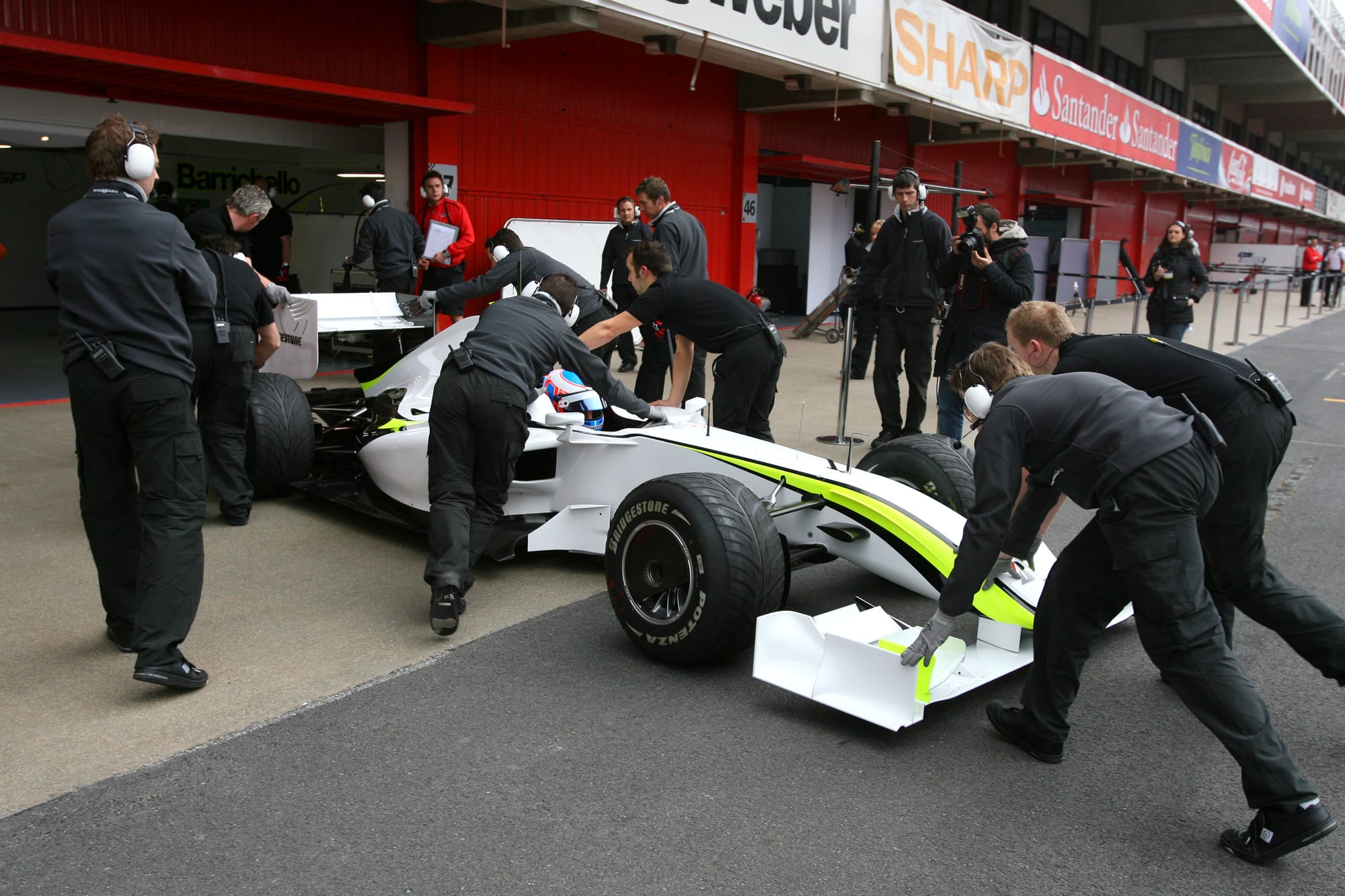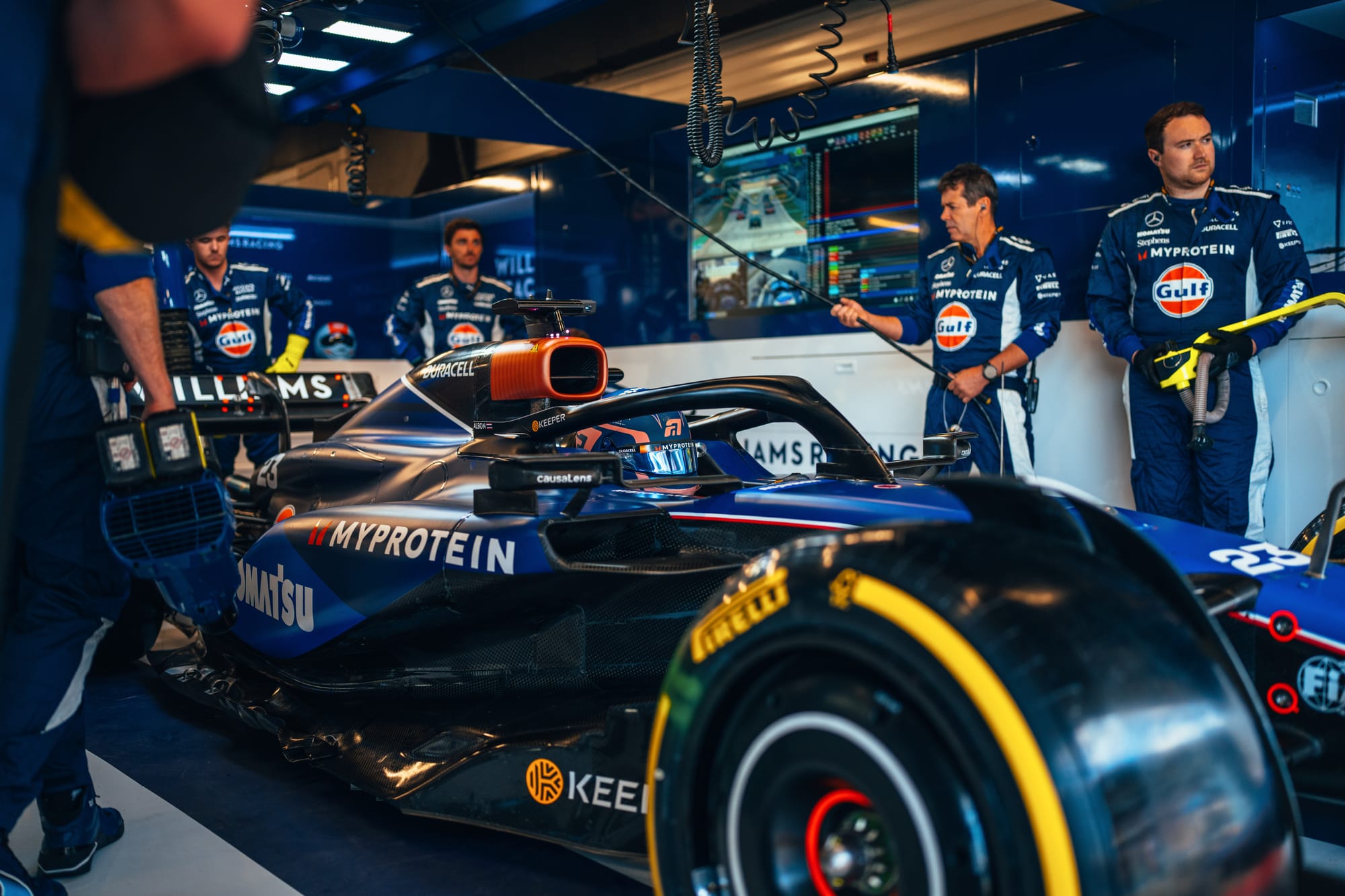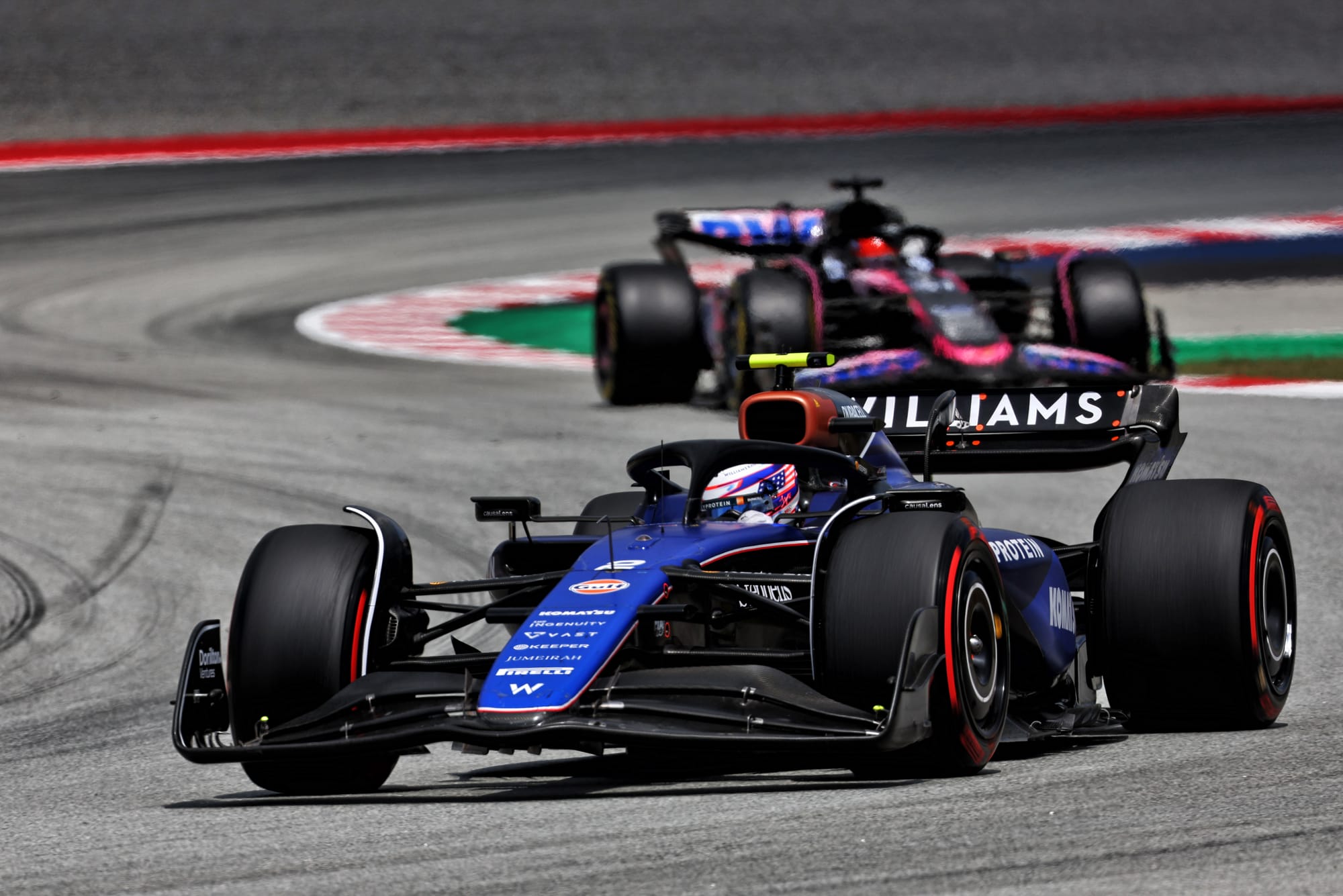Williams' signing of six new technical leaders and what team principal James Vowles told The Race an additional 26 recruits “in addition” is the clearest statement of intent yet about how serious it is about climbing onto the Formula 1 grid and a reminder that team development is far from the track. It is the key to achieving his goals.
The most notable newcomer, who Williams boasts a combined 25 world titles between them, is former Alpine technical director Matt Harman. He will take over as design director in September. This comes as part of a reshuffle that sees David Warner, previously design director and technical director on an interim basis, move to engineering director.
Harman's appointment may have come as a surprise to some given that he tendered his resignation shortly before the start of the season when the depth of Alpine's problems was revealed. This came after Alpine's shock failure in a lateral load test, which resulted in significant weight being added to the monocoques to strengthen them and ensure raceability in the early stages of the season.
Harman clearly oversaw this failure, but the process revealed flaws in modeling the behavior of its monocoque design under load. His departure could therefore be interpreted as frustration at not having the required investment and tools at his disposal, just as easily as it could be a result of his failure. Williams leans toward the former interpretation.
“Personally I think it's not just about one individual,” Vowles tells Racing. “I have little awareness of what happened, which is unfortunate, but this is not the job of one individual. The opposite is that you can pin Matt as the guy who had a car that finished fourth in the championship.” [in 2022]So you can go and choose which one you think I believe in!
“But hopefully one of my strengths is hiring people who have the right behaviors, the right characteristics, the right thought processes, the right approach. Matt has all of those.
In addition to Fowles' knowledge of Harman, Pat Frye had worked closely with him at Alpine and would understand what really happened there. But Fowles' experience was even more important in this recruitment.
Harmann first entered the world of Formula 1 with Elmore in 2000, the company that later became Mercedes-Benz Performance Cars in 2005. He worked on the quick installation of a Mercedes V8 in the back of Brawn's car ahead of the 2009 season, where He worked with Vowles during the team's evolution into Mercedes before leaving in the fall of 2018 to join Alpine.

“Matt is a fantastic person,” Fowles told The Race. “He's coming here to organise the design office, a role he'll be very well suited to.”
“He's very good at having designers basically make sure we stick to a plan and a cost in a cost ceiling world and design at a high level of quality. So that's where he comes in.”
This summary is important. Harman will not be joining as technical director – Fry now works as TD – and this is very deliberate. Vowels had a good understanding of Harman's skill set and wanted to hire him with a narrower focus than a technical director position in a rapidly evolving design office to which 13 new employees would be added.
“[It’s] “There’s definitely a tougher task,” says Vowles. “There are a number of reasons for that. We have a lot to do. The Alpine team were probably in better shape than us, but I know Matt well enough to know his strengths. And that’s his strength, so let’s play to that.”
“He's lucky here because it's a different environment but you'll notice that we actually have breadth in this area in terms of simulation, car performance, car performance and incredibly good drivers. That's why it takes a different role here as well.”
Harman is not the only former Alpine employee heading to Williams. Of the 26 “regular class” arrivals, Williams describes 10 as coming from Alpine, with four coming from Red Bull and “several” from Mercedes and Ferrari.
But that's not the outcome for Frey, who left his position as Alpine's chief technology officer in 2023, as he chose who he worked with. As a respected and hugely accomplished technical leader in Formula 1, he has been described as having a “halo” effect in attracting people, but all of Alpine's new arrivals have also previously worked with Vowles.
“I have interacted with every one of these individuals. [in F1]“Or in a different role,” Fowles says. “Pat is not actively recruiting. However, Pat also has a halo effect that people want to come and join him where he is at the moment. For good reason. It is natural for people to want to look up to good leaders, far from where they are located.
“It's the same reason why I'm lucky, a few Mercedes employees are coming to join me for the same reason, they want to be part of the journey. But I'm sure Pat is the motivator. I'm sure he's a motivator, but it's not a direct approach.”

Harman may be the most high-profile recruit, but Williams brings some serious technical muscle in leadership and rank and file, including Fabrice Moncade, who will start as chief engineer for computing sciences on July 1.
He was previously Head of Performance Analytics at Ferrari, and has also worked for Mercedes, McLaren and Sauber.
“The way you develop modern Formula 1 cars is you need to make sure you have a good understanding of how to move data around the organisation and simulate it properly,” says Vowles. “Fabrice is one of the creators of what’s called DLS – Dynamic LapSim – which pretty much every team uses as far as I know, but he’s the first one to do it and he’s very good at what he does.
“I’ve known him since the Mercedes days where he overlapped briefly with me, but he’s also done stints at McLaren, Sauber and Ferrari. At Ferrari he ran a group of 40 people who focused on simulation and simulation. You have power there and you have power in what you do in terms of extra performance, and he’s rightly considered the best within the organisation.
Steve Winstanley has joined as chief engineer, vehicle and chassis. He is a key recruit, not only because of his 22 years of Formula 1 experience – including the last 14 at Red Bull – but also because Williams needs to make significant changes to allow it to meet its weight targets. As Vowles says: “The chassis is the driving force behind taking the weight out of the car, and delivering it on time.”
Among the new recruits from Alpine is Richard Frith, who will join the team as Head of Performance Systems in 2025. A Formula 1 veteran with 25 years’ experience, he has also worked with Jordan, Force India, Sauber, Marussia and McLaren.
“Richard is now the head of performance at Alpine,” says Vowles. “He overlapped with me at Mercedes when he was there in Formula E, and he overlapped at McLaren with a number of people.
“He's one of those quiet guys that a lot of people don't know, who does a great job of making the car go faster. That's what he came here for as well. He works very well next to Matt, he works very well with Pat, and he will work very well with Fabrice V Simulation aspect.”
Williams also named Soren Sheeran as chief information and analytics officer. He spent 17 years at Hewlett Packard Enterprise specializing in artificial intelligence and innovation. Williams says he will “lead a transformation in how the team acquires, stores, indexes and uses data to build a best-in-class technology operation.” This is a key appointment given Fowles’ complaints about the team’s lack of an enterprise resource planning (ERP) system.
This meant that the team was trying to keep track of the huge number of parts being manufactured for a new car using a spreadsheet rather than a proper ERP system.
“I’ve talked openly about having Excel documents, but what you need are class-leading methods and systems for how you use and move data across the organization,” says Fowles. “You’re not buying products, you’re developing systems to make things better.
“For 17 years, I overlapped with Soren at Mercedes when he was at HPE. [Hewlett Packard]“He did some of the best projects that are still in progress today there. That's why it made sense to bring him into the organization as well.”
The sixth key member of staff in the technical leadership is new chief aerodynamicist Juan Molina, who starts on July 15. Molina was Haas’s chief aerodynamicist until the end of last year after joining the team in July 2018, before which he spent seven years at Red Bull.

Given Williams' long-standing aerodynamic difficulties, it has also been joined by 11 more recruits to join the aerodynamics department, boosting the effectiveness of what remains the key performance-determining department for the Formula 1 team.
Williams did not disclose details of the other players, who are between the ages of 20 and 30. However, this influx of high-quality individuals is a key part of the team’s attempt to return to the top under the ownership of Dorilton Capital.
For this reason, it is not about placing the onus on any one department or individual to lead the transformation. But as Vowles explains, it's about improvement across the board: “How we work as a design office, how we work as an operations centre, how we bring performance into the car from an aerodynamic standpoint, the structures side of things.”
Williams, which has already expanded from about 700 to 1,000 employees, still has a long way to go, but Fowles' revolution has now taken a bigger shape.





